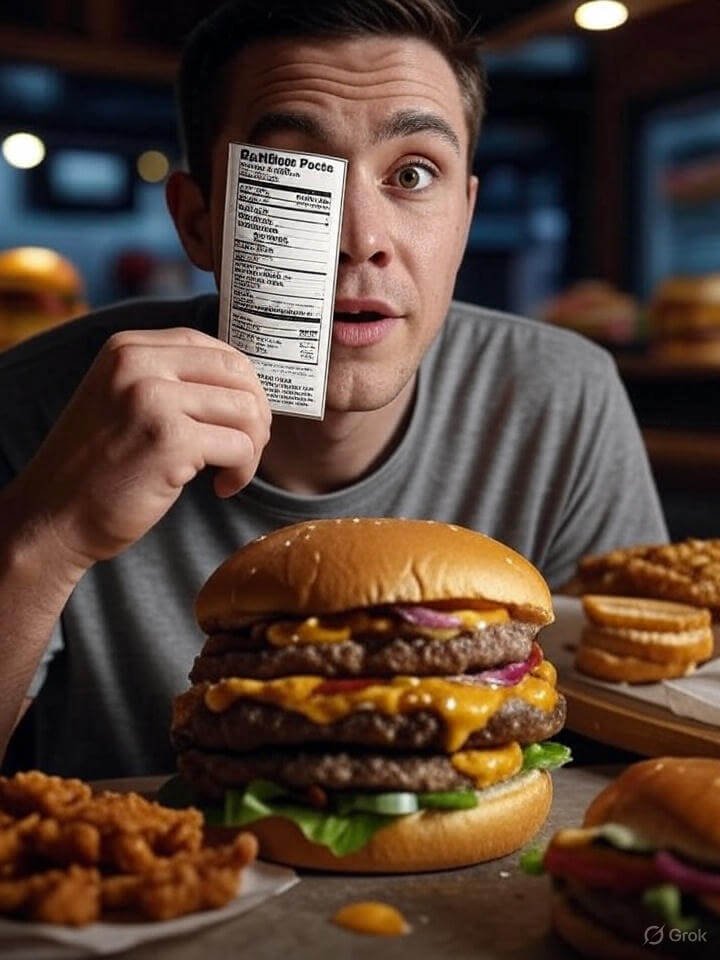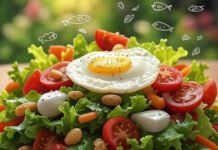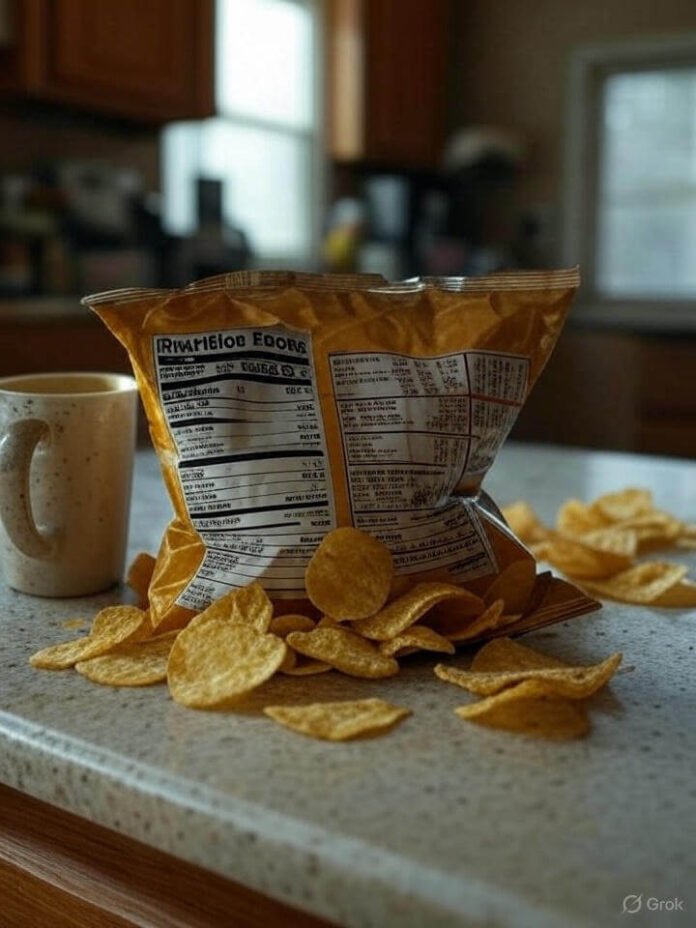Okay, so here’s the deal: I was standing in my kitchen the other night with a bag of pretzels (you know, the ones you buy because they look “healthier” than chips but then end up eating like half the bag while scrolling TikTok?). And I did something brave—no, heroic. I flipped the bag over and actually looked at the nutrition facts.
That phrase—nutrition facts—is supposed to make you feel smart and in control. Spoiler: it usually makes me feel like I’m being tricked by a magician in a lab coat. One second I’m like, “Oh wow, only 120 calories per serving.” Next second I realize a serving is literally 7 pretzels. SEVEN. Who eats seven pretzels? I eat seven just trying to open the bag.
And that’s the truth about nutrition facts nobody tells you: they’re not lying, but they’re kinda… lying.
Why Nutrition Facts Feel Like a Trap
Here’s the thing. Nutrition labels were designed to help us, but sometimes they feel more like a math test I didn’t study for. Calories, grams, percentages… all lined up like it’s some kind of Wall Street stock report.
And the serving size trick? Classic. I once bought a “healthy” smoothie that said 120 calories. I was like, “Sweet, I’ll drink this every day.” Guess what? The bottle had 2.5 servings. I had basically just chugged 300 calories of mango sugar water. (Still delicious, but come on.)
Is it just me, or does anyone else feel like food companies are playing the world’s most boring prank show on us?
The Serving Size Drama
Let’s talk about this because it’s low-key the biggest scam. Serving sizes are like that one friend who always says “I’ll be there in 5 minutes” but shows up 45 minutes late. Technically not lying, but definitely misleading.
- A pint of ice cream? Serving size: ⅔ cup. Reality: who actually stops at ⅔ of a cup?
- A bag of chips? Serving size: 15 chips. Reality: I’ve inhaled that before Netflix even loads.
- Cereal? Serving size: ¾ cup. Reality: if you measure out ¾ cup of Cinnamon Toast Crunch, it looks like food for an action figure.
Daily Values: AKA the “Percentages That Judge You”
The % Daily Value column. Oh boy. It’s supposed to tell you how much of your daily limit you’re eating. But who is this mysterious “average person” they keep basing it on?
Like, “This has 30% of your sodium for the day.” Okay… but what if I already had pizza for lunch? Am I at 200% now? Am I dying? Should I drink a gallon of water and do 50 jumping jacks?
The daily values are based on a 2,000 calorie diet. Which, fun fact, was picked in the 90s because it was a “nice round number.” That’s it. Not because it works for everyone. Just because it sounded neat. (I wish I was making that up.)

If you want an actually filling (and not scammy) option, check out my post on 20 Quick and Healthy Dinner Recipes that don’t leave you feeling like you need a “second dinner” afterward.
Sugar: The Sneaky Villain
Here’s my beef with nutrition facts—well, not beef, sugar. The label says “12g sugar.” Cool. But is that added sugar? Natural sugar? Do I need to call a scientist to figure this out?
I once bought granola bars that proudly said “Made with whole grains” on the front. On the back? 18 grams of sugar. That’s basically a candy bar in disguise. The only difference was the wrapper looked healthier.
My grandma used to say, “If it comes in a shiny wrapper, it’s dessert.” And honestly? She wasn’t wrong.
Fat: The Word That Freaked Us Out in the 90s
Remember when “low-fat” was like the holy grail? My mom bought those Snackwell’s cookies in bulk. We thought they were diet-friendly. Turns out they were just low-fat but packed with sugar. So, yeah, we were basically mainlining cake frosting but patting ourselves on the back for being “healthy.”
Now we’re all supposed to love “good fats”—avocados, olive oil, nuts. Which is great, but every time I drizzle olive oil, I hear that little voice in my head: “1 tablespoon = 120 calories.” Like… can you not?
P.S. If you want more hacks like this, my post on Level Up Your Life in 30 Days has some surprisingly good food tricks mixed in with the random life ones.
So, What Do Nutrition Facts Actually Mean for Us?
Here’s my messy, real-person answer: they’re not useless, but they’re also not the whole story.
- They give you clues. Like, if something has 60g of sugar, maybe it’s not a breakfast food.
- They help with comparisons. Two yogurts side by side? Yeah, pick the one with less sugar and more protein.
- But they don’t tell you how you will feel after eating it.
I’ve eaten a “healthy” frozen dinner that checked all the boxes—low fat, decent protein, not too much sodium. And yet… I was hungry again 20 minutes later. Then I ate a homemade sandwich with peanut butter and bananas, and I was good for hours. The math didn’t add up, but my stomach didn’t care.
A Few Things That Actually Help (From a Regular Human, Not a Nutritionist)
- Check serving sizes, but don’t obsess. If you know you’ll eat the whole bag, just do the math. Or don’t—sometimes ignorance is bliss.
- Sugar is sugar. Natural, added, organic cane syrup—it still spikes your blood sugar.
- Protein matters. I feel way less like a zombie when I eat enough of it.
- Listen to your body. Cornflakes may say “heart healthy,” but if you’re starving by 10 a.m., they’re not doing you any favors.
Random Side Tangent
The other day, I was eating “protein chips” (yes, that’s a thing now), and my son looked at me and said, “Mom, do they taste like regular chips?” And I had to admit… no. They tasted like drywall dust with seasoning. Sometimes nutrition facts can’t save you from bad snacks.
Final Thought (If I Can Call It That)
Nutrition facts are like that one friend who gives decent advice but also texts you “u up?” at 2 a.m. They’re helpful, but not exactly trustworthy on their own. Use them as a guide, but also trust your actual experience.
Because here’s the real truth: no label knows your body better than you do.
And honestly? If I want to eat 30 pretzels instead of 7, I’m gonna do it. Life’s too short for math homework at snack time.
































